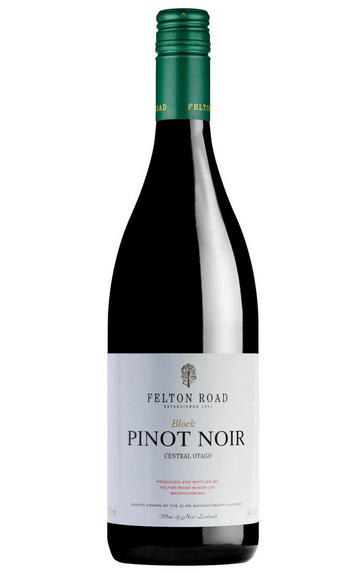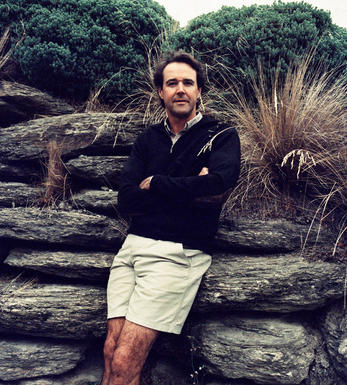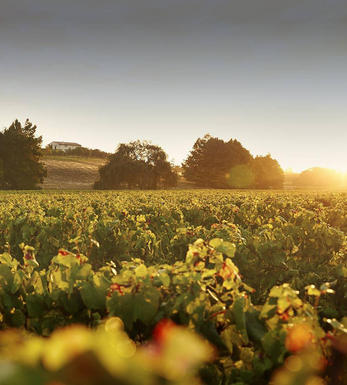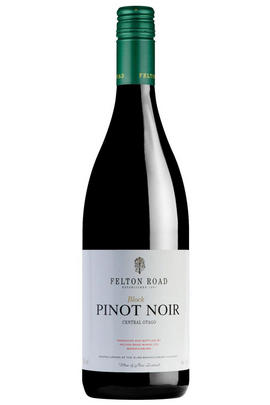
Critics reviews
Neal Martin - 31/08/2009
About this WINE

Felton Road
The Felton Road winery in New Zealand's Central Otago was bought by Nigel Greening, a self-described Pinot Noir "addict" from England, in 2000 and has been farmed organically & biodynamically since then.
Their grapes are entirely grown in their own 'Elms Bannockburn Vineyard' which has a northerly exposure to help maximise ripeness.
Felton Road's winemaker Blair Walter's experience in Oregon and Burgundy has stood him in good stead for coaxing the best out of the property's vines. He adopts a 'hands off' approach in the unique three-level winery, which is built into the hillside, with the aim of producing wines of elegance, complexity and exceptional depth of fruit.
The result is that Felton Road produces a rare beast - A suberb Pinot Noir wine, one of the best examples from outside Burgundy, plus an equally great Chardonnay.

Central Otago
Central Otago is the most southerly wine region in the world and is responsible for five-point-five percent of a href=/region-3-new-zealand>New Zealand's vines (1,253 hectares in 2006). Central Otago was first identified as a site of serious Pinot potential in 1895 by Italian viticulturalist Romeo Bragato, drafted in by the government to treat the Phylloxera louse, subsequently recommending grafted rootstocks as a remedy in 1901. It had been thought to be worth even more during the Gold Rush days of the 1860s, before being turned over to merino sheep and later fruit orchards until the 1970s. In 1976, Gibbston Valley's alluvial gravel soils were the first to be planted in the area.
It's a measure of the success of the Central Otago ‘brand’, and the appeal of its full-bodied Pinot Noirs, that the region has experienced a 350 percent increase in the vines planted there, and a 125 percent increase in the number of new wineries over the same period (up to 89, or 16 percent of the country's total); as per b>Marlborough's relationship with a href=/grape-sb-sauvignon-blanc>Sauvignon Blanc, b>Pinot Noir now represents approximately 75 percent of the Central Otago vineyards. That the region's capital, Queenstown, annually plays host to the country's Pinot Noir forum is further proof of the region's significance. More controversially, the recent rush to secure vineyards within this now fashionable viticultural zone has led to a rash of criticism over the quality of some of the newcomers.
Located at the foot of South Island, the region may be on the 45th parallel south, but its site among the Bannockburn Hills of the Southern Alps (at approximately 200 metres above sea level) ensures a continental climate, if one dogged by frosts and marked by significant swings in temperature (up to 40 degrees Celsius at times). Soil profiles vary between the deep silt loams of the Bannockburn sub-region, while the wider Cromwell Basin displays both sandy loam over calcium deposits as well as alluvial loess over schist. Vinification typically involves French-oak barrel ageing of between 10 to 18 months.
Stylistically, the Gibbston Valley wines (such as those of Peregrine Wines) show a sweet, soft red raspberry and strawberry fruitiness, while the warmer Bannockburn/Loburn areas produce more powerful, tannic styles with black cherry and thyme notes b>Felton Road's range is a prime example. Fine Riesling is also produced amongst the schistous soils.
Recommended producers: Amisfield Estate, a href=/producer-3606-felton-road>Felton Road, Peregrine Wines, Ostler Vineyard.

Pinot Noir
Pinot Noir is probably the most frustrating, and at times infuriating, wine grape in the world. However when it is successful, it can produce some of the most sublime wines known to man. This thin-skinned grape which grows in small, tight bunches performs well on well-drained, deepish limestone based subsoils as are found on Burgundy's Côte d'Or.
Pinot Noir is more susceptible than other varieties to over cropping - concentration and varietal character disappear rapidly if yields are excessive and yields as little as 25hl/ha are the norm for some climats of the Côte d`Or.
Because of the thinness of the skins, Pinot Noir wines are lighter in colour, body and tannins. However the best wines have grip, complexity and an intensity of fruit seldom found in wine from other grapes. Young Pinot Noir can smell almost sweet, redolent with freshly crushed raspberries, cherries and redcurrants. When mature, the best wines develop a sensuous, silky mouth feel with the fruit flavours deepening and gamey "sous-bois" nuances emerging.
The best examples are still found in Burgundy, although Pinot Noir`s key role in Champagne should not be forgotten. It is grown throughout the world with notable success in the Carneros and Russian River Valley districts of California, and the Martinborough and Central Otago regions of New Zealand.



Buying options
Add to wishlist
Description
Tasting pinot noirs from New Zealand reminded me how much better this fashionable, food-friendly red variety has become in this country. New Zealand has developed a style of its own, with the emphasis on purity and sweetness of fruit, and seamless texture. The results are not like red burgundy with its more savoury flavours, but most Pinots are not trying to be and that’s their strength.
Felton Road's 2007 vintage may not be cheap, but it’s worth paying the extra for this stellar N. Zealand Pinot Noir.
(Joanna Simon - The Sunday Times - Sauce: Pinot Noir - 08/03/09) A very floral, perfumed, classic Pinot Noir nose: fruit, violets, spice and bramble, with nothing in excess. Creamy and weighty across the mid-palate, very flowing, almost juicy sweetness with just enough dusty tannins kicking in to complement a dark finish with hints of espresso and chocolate. Complete, complex and perhaps close to the ultimate expression for a Felton Road Pinot Noir. Drinking now till 2012, along with with rabbit and prune hotpot.
(David Berry Green)
wine at a glance
Delivery and quality guarantee